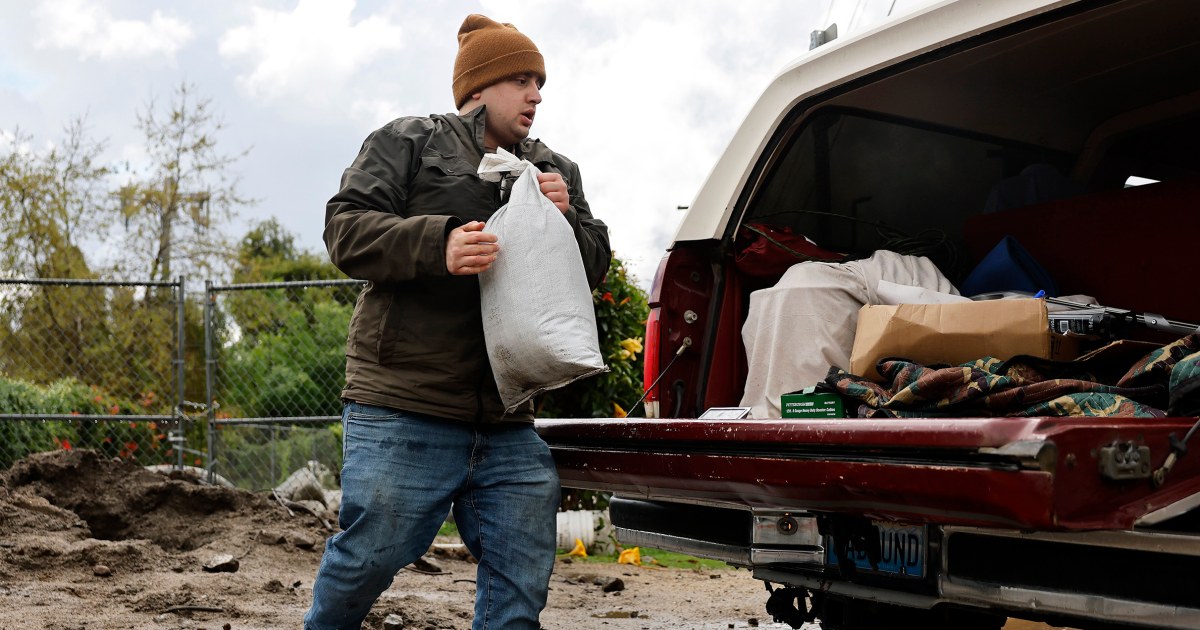L.A. Braces for Deluge: Understanding the Impact of Flooding and Power Outages
In the heart of California, Los Angeles is currently experiencing a powerful storm that has unleashed heavy rains, leading to widespread flooding and significant power outages. The severity of the situation has prompted local authorities to issue urgent evacuation orders, especially for those residing in burn scar areas. As the rain continues to fall, concerns regarding public safety and the resilience of infrastructure grow, making it critical for residents to stay informed and prepared.
The Current Situation: A Storm Unleashed
The storm battering Los Angeles has brought about unprecedented rainfall, overwhelming drainage systems and leading to flash floods in various neighborhoods. The National Weather Service has reported that some areas have received over three inches of rain in just a few hours, with forecasts predicting that the deluge could last for several more days. This has raised alarms about potential mudslides, especially in areas previously affected by wildfires.
In response to the escalating conditions, emergency services have been dispatched across the city to assist residents in high-risk zones. Evacuation centers have been established, providing shelter and resources for those displaced by the flooding. Authorities are prioritizing the safety of residents, particularly in regions prone to mudslides and debris flows.
Evacuation Orders: Who Needs to Leave?
As part of the emergency response, officials are urging residents living in burn scar areas—regions where wildfires have stripped away vegetation—to evacuate immediately. These areas are particularly vulnerable to mudslides, which can occur with little warning. The Los Angeles Fire Department has identified several key zones where evacuations are mandatory:
- Malibu Canyon
- Topanga Canyon
- Mount Wilson
- Santa Monica Mountains
Residents in these areas have been advised to prepare for the worst. This includes gathering essential documents, medications, and personal belongings in case they need to evacuate quickly. Local authorities have set up hotlines and websites to provide real-time updates on evacuation routes and safety tips.
Power Outages: A Widespread Concern
Alongside the flooding, power outages have affected thousands of residents across Los Angeles. As trees topple and debris strikes power lines, utility companies are working diligently to restore electricity. According to reports, over 50,000 customers have experienced outages, with utility crews facing hazardous conditions while attempting repairs.
Residents are advised to prepare for extended outages by:
- Stocking up on non-perishable food and water
- Charging mobile devices and power banks
- Using flashlights instead of candles to reduce fire risk
Local authorities have also emphasized the importance of staying indoors and avoiding unnecessary travel during the storm. Traffic accidents and road closures have been reported, further complicating emergency response efforts.
Infrastructure Resilience: A Growing Challenge
As Los Angeles braces for the deluge, questions surrounding the resilience of its infrastructure become increasingly relevant. The city has invested in various flood control measures over the years, including improved drainage systems and retention basins. However, the intensity of recent storms has tested these systems to their limits.
Experts highlight that climate change has been a significant factor in the increasing frequency and severity of storms in Southern California. As the climate warms, the atmosphere can hold more moisture, leading to more intense rainfall events. This places a strain on existing infrastructure, necessitating further investment in upgrades and preventative measures.
The city is actively working on several projects aimed at enhancing flood resilience, including:
- Expanding green infrastructure, such as rain gardens and permeable pavements
- Upgrading existing stormwater systems to handle larger volumes of runoff
- Implementing community education programs about flood preparedness
Community Response: Coming Together in Times of Crisis
In times of crisis, the strength of community shines through. Various organizations and volunteers have mobilized to assist those affected by the flooding. Local food banks and shelters are providing meals and supplies to evacuees, while community centers are serving as gathering spots for information and support.
Social media has played a vital role in disseminating information quickly. Residents are encouraged to share updates on road conditions, available resources, and safety tips. This grassroots communication is essential in ensuring that everyone remains informed and connected during the storm.
Looking Forward: Preparing for a Changing Climate
As Los Angeles endures this storm, it serves as a reminder of the importance of preparedness in the face of natural disasters. Residents are urged to stay informed about weather forecasts and local emergency protocols. Additionally, individuals should consider developing personal emergency plans that include meeting points, communication strategies, and emergency kits.
In the long term, the city must prioritize infrastructure investments and sustainable practices to mitigate the impacts of future storms. Community resilience and adaptability will be key factors in how Los Angeles navigates the challenges posed by climate change and extreme weather events.
Conclusion
The current storm system hitting Los Angeles is a stark reminder of nature’s power and the necessity for preparedness. As flooding and power outages prompt urgent evacuations, the city rallies together, demonstrating resilience and community spirit. By staying informed, preparing adequately, and supporting one another, residents can navigate this challenging time with hope and determination.
As the storm passes, the lessons learned will undoubtedly shape future responses to similar events. Ensuring that Los Angeles is equipped for the next deluge will require a concerted effort from both authorities and residents alike, fostering a safer and more resilient community for years to come.
See more Your Daily Weather



